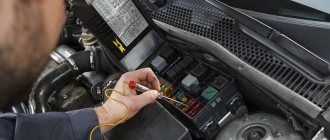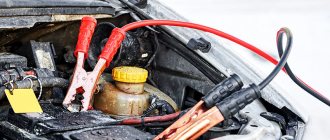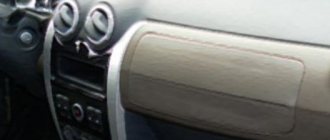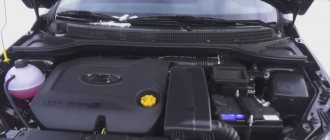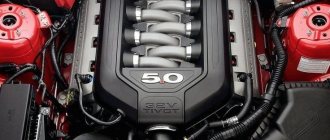A dead battery that refuses to start the engine in the morning is a situation familiar to every motorist. Under normal conditions, this happens infrequently and is the result of driver forgetfulness. But what to do if the battery is discharged not because the headlights or interior light bulbs were left on? Most likely, the car has a current leak in the on-board network, which leads to a rapid discharge of the battery. Let's try to figure out what this parameter depends on and how to solve this problem.
Multimeter
As soon as the multimeter reacts with a sharp decrease in current readings, the culprit has been found. The rest is a matter of technique. Of course, after checking the circuit, each fuse should be immediately returned to its place. They have different denominations, and therefore simply replacing one with another is unacceptable.
What if it doesn't work out?
If the fuses run out and the multimeter does not catch anything, then only power circuits remain, not protected by anything. As a rule, these are the starter, generator and ignition system.
Connecting the device
Every car owner needs to know what leakage current should be in the car. Before determining current losses, the device must be connected to the network. Devices that consume battery power must be turned off. The multimeter is connected to the system:
- The cable from the positive output of the battery is removed.
- One contact of the multimeter is connected to the battery positive.
- The second contact is connected to the wire that is disconnected from the network.
We recommend: Average car battery life
Do not connect the device to the plus and minus of the battery at the same time - this may cause a short circuit. The car will be fine, but the fuse will burn out quickly. If everything is connected correctly, the display shows an indication of the electrical current that is constantly flowing through the electrical device.
If the permissible loss of electricity in the machine is lower than the measurement result, you should continue to search for the cause of the leak.
Circuit breakers
The signaling and “music” stand apart. Whether you need to “dig” further is up to you to decide. If your qualifications and experience do not allow you to eliminate the current leak on your own, it is better to go to a service center. Now even a dishonest serviceman will not be able to fool you, because you already know the cause of the leak.
- Electrical leakage in a car is a common fault.
p, blockquote 1,0,0,0,0 —>
p, blockquote 2,0,0,0,0 —>
It is found even in new cars, in which, being packed with electronic devices, it is extremely difficult to detect and eliminate leaks.
p, blockquote 3,0,0,0,0 —>
p, blockquote 4,0,0,0,0 —>
Driver errors
When preparing your car for the night, you need to make sure that all devices are turned off. Any energy consumer can completely discharge the battery overnight. We invite you to watch a detailed video study of why your car battery dies overnight.
Good day, dear friends! There is probably no car enthusiast who has not found himself in an unpleasant situation due to a dead battery at the most unnecessary moment. With a discharged battery, the car becomes practically useless, except perhaps for shelter from the rain. Again being late for work or some important meeting, frayed nerves. Yes, you can accidentally forget and leave the radio or headlights on, but what if this happens through no fault of the driver?
The battery (car battery) is an important element of the vehicle's energy system. Without it, the car simply won’t start, because it is the battery that powers all the electronic components of the car. This device consists of six two-volt elements, which, together, produce 12 volts. The internal elements of the battery are made of lead plates coated with a special substance and immersed in electrolyte. All this generates electric current. The battery in a car performs the following functions:
- Starts the engine;
- Helps the generator cope with the load placed on it;
- Allows electrical appliances to operate when the engine is turned off.
What it is
p, blockquote 5,0,0,0,0 —>
In a general sense, current leakage refers to the presence and magnitude of current that flows from a specific power bus to ground or a common wire in an undamaged electrical circuit. This definition applies more to industrial and household electrical circuits. In this case, the leakage is determined by the quality of the insulation.
p, blockquote 6,0,0,0,0 —>
In a car, current leakage is measured by the presence and magnitude of current when the ignition is turned off and the electrical equipment is completely turned off using the car’s standard switches.
p, blockquote 7,0,0,0,0 —>
Now in more understandable language. The car has two power buses. Traditionally, they are designated tire 30 and tire 15.
p, blockquote 8,0,0,0,0 —>
Bus 30 receives voltage from the positive terminal of the battery directly through a powerful fuse (sometimes without it). Voltage comes to bus 15 through the contact group of the ignition switch.
p, blockquote 9,0,0,0,0 —>
That is, when the ignition is turned off, bus 15 is de-energized (at least it should be if the ignition switch contact group is working). Thus, turning off the ignition and turning off all electrical equipment, bus 30 still remains connected to the battery.
p, blockquote 10,0,0,0,0 —>
Video - how to determine current leakage in a car:
p, blockquote 11,0,0,0,0 —>
p, blockquote 12,0,0,0,0 —>
In most cases, it is along bus 30 that current leaks. Leaving the car's electrical equipment on while parked, either inadvertently or intentionally (radio, dimensions, etc.), is not considered a current leak.
p, blockquote 13,0,0,0,0 —> adsp-pro-1 —>
Why does my car battery drain overnight?
Speaking about which battery is best suited for the Priora, it is worth recalling one point. The manufacturer installs an AKOM battery on this family, which has the following characteristics:
- capacity – 55 Ah;
- starting current - 425 amperes.
Based on this, you should choose a new battery. It is worth noting that car enthusiasts often install a more capacious battery on the Priora, 60 Ah. This step is completely justified. The thing is that the price difference here is small, but the 60 Ah battery makes it easier to start the engine on a winter day when the temperature outside is sub-zero. On the other hand, if the car is kept in a warm garage and your trips are not too long, then it is better to go with “stock” characteristics. The thing is that a 55 Ah battery charges a little faster.
Now let's talk about what type of battery is most optimal for Priora. There are currently 3 main options on the market:
- gel;
- based on Absorbent Glass Mat technology;
- lead-acid.
Based on the price-quality ratio, then for the VAZ-2170 the last option is the most optimal.
| at least 55 | |||
| Sample numbers | 1 | 2 | 3 |
| AkTech-Baikal | 57,3 | 57,6 | 57,2 |
| Buran | 58,6 | 61,6 | 61,3 |
| Bison | 55,0 | 56,0 | 56,9 |
| GROOVE | 57,8 | 58 | 63,4 |
| Cathode | 60,8 | 60,5 | 57,7 |
| Pilot | 57,2 | 58,2 | 61,5 |
| Titanium | 47,1 | 46,0 | 47,1 |
| Tyumen Battery | 58,9 | 60,3 | 62,3 |
| Bosch Silver | 59,5 | 59,6 | 58,6 |
| Bost | 64,9 | 57,9 | 64,4 |
| Black Horse | 54,4 | 53,5 | 54,3 |
| Fiamm Base System | 51,6 | 51,8 | 57,3 |
| Kraft | 48,1 | 51,6 | 47,3 |
| Mutlu | 59,5 | 58,6 | 58,6 |
| Power International | 58,8 | 59,2 | 59,1 |
| Topla | 59,1 | 58,4 | 58,8 |
| Tudor | 57,2 | 49,6 | 55,9 |
| Varta Blue Dynamic | 57,2 | 55,9 | 59,3 |
| 2 | 3 | 1 | 2 | 3 | |
| 9,5 | 9,7 | 9,7 | 2,6 | 2,8 | 2,7 |
| 8,7 | 8,7 | 8,7 | 3,2 | 3,2 | 3,3 |
| 9,1 | 9,1 | 9,0 | 2,8 | 2,7 | 2,8 |
| 9,7 | 9,7 | 9,7 | 2,9 | 2,6 | 3,1 |
| 9,6 | 9,7 | 9,6 | 2,9 | 2,5 | 3,0 |
| 9,3 | 9,2 | 9,4 | 2,9 | 3,0 | 3,1 |
| 9,6 | 9,6 | 9,6 | 3,0 | 2,8 | 2,8 |
| 9,0 | 9,0 | 9,0 | 2,6 | 2,9 | 2,9 |
| 9,4 | 9,4 | 9,4 | 2,8 | 2,9 | 2,7 |
| 9,0 | 9,1 | 9,0 | 2,7 | 2,8 | 2,6 |
| 9,5 | 9,5 | 9,5 | 1,9 | 2,3 | 1,9 |
| 9,2 | 9,0 | 9,1 | 2,2 | 2,2 | 2,4 |
| 8,8 | 8,8 | 8,7 | 1,0 | 1,3 | 0,9 |
| 9,5 | 9,6 | 9,5 | 2,3 | 2,0 | 1,8 |
| 9,3 | 9,3 | 9,4 | 3,3 | 3,4 | 3,2 |
| 9,8 | 9,7 | 9,7 | 2,3 | 2,1 | 2,3 |
| 9,5 | 9,5 | 9,5 | 2,8 | 2,7 | 2,9 |
| 9,4 | 9,5 | 9,5 | 2,1 | 2,2 | 2,6 |
By the way, many people, when thinking about which battery to choose for a Priora, are guided by the opinions of owners of other cars. And because Lada Priora is a deep restyling of the VAZ 2110, so you can safely rely on their opinions and reviews.
This option most often happens with old batteries that have exhausted their service life. Each battery has its own expiration date, but, as a rule, smartphones last a long time without replacement. That is why problems with charging and discharging the battery are the most popular among gadget owners.
It should be noted right away that some gadgets charge quickly straight from the factory. They are technically equipped with this function, and in the box they come with chargers designed for this purpose.
As soon as you notice problems with the battery charge, you should immediately take the first emergency measures to solve this problem:
- Check the appearance of the battery for mechanical damage or swelling.
- Delete all Android applications that are responsible for charging and saving energy, including the popular Clean Master.
- Taking your phone to a service center is the best and safest way to solve any problems with gadgets. There they will diagnose it, understand the reasons, give advice and solutions.
- Calibrating the battery yourself will help. However, you should be prepared to lose your warranty if it is still valid. All calibration applications, including the recommended Battery Calibration, require root rights, that is, in fact, hacking the smartphone.
Most common reasons
p, blockquote 14,0,0,0,0 —>
Vehicle equipment that is powered from bus 30 and can serve as a source of current leakage:
p, blockquote 15,0,0,0,0 —>
Car radio
The most likely reason. To maintain volatile memory (storing individual settings, counting time), most car radios are supplied with power via bus 30. If the radio is faulty, current may leak through it. A working radio also has a current leak; it usually does not exceed 10 milliamps.
The heart of the power supply
In most cases, the “heart” of the power supply in standby mode is the stabilizer. This could be a buck-boost switching regulator or a low-dropout linear regulator (LDO). In more complex cases, it is a power management IC (PMIC) that handles multiple power architectures and even the charger. In standby mode, power consumption is determined by the quiescent current, often referred to as IQ. During light load operation, the quiescent current can make a large contribution to the energy transfer efficiency of the entire system.
Many engineers think of quiescent current as leakage current, but this is a simplified representation. The concept becomes more complex when we apply it to power supplies.
Permissible current leakage in a car (norm)
p, blockquote 27,0,0,0,0 —>
If we sum up all of the above reasons in normal operation, it turns out that the total leakage current in the car can be up to 250 milliamps.
p, blockquote 28,0,0,0,0 —>
It can be considered normal if the current leakage in the car does not exceed 0.2 Amperes (200 milliamps)
.
p, blockquote 29,0,0,0,0 —>
Here the opinions of many experts differ. Some auto electricians refuse to look for current leakage down to values of 0.5 Ampere. Others believe that the permissible leakage should not exceed 100 milliamps.
But all experts are unanimous in their opinion: if the leakage current is greater than the critical value of 500 milliamers (0.5 Amperes), it is necessary to eliminate the causes of this, because the consequences may be irreparable.
p, blockquote 31,0,0,0,0 —>
Video - how to measure leakage current in a car with a multimeter:
p, blockquote 32,0,0,0,0 —>
p, blockquote 33,0,0,0,0 —>
Why does the battery run out: did the patient sweat before dying?
Why does another battery give out after working for only a year or two? In a car, it is charged from a generator - at a constant voltage in the on-board network. After starting the engine, intensive charging lasts only a few minutes (this is called accelerated charging). The current at the beginning of the charge can reach tens of amperes, but then throughout the entire trip it is close to zero. With this “lifestyle”, the battery is constantly undercharged, large insoluble lead sulfate crystals form on the plates - they increase the internal resistance of the battery, and its capacity becomes less and less with each cycle.
Let us remind you that a battery whose terminal voltage has dropped to 10.2 V is considered completely discharged, since at less it will begin to deteriorate. But such a battery can easily start a working engine in the summer! It’s a different matter after a night in the cold; nothing will come of it for sure.
Often the batteries that are the leaders in advertising tests only work at C levels and don’t last long. This is partly due to the way they are charged before testing: using direct current allows you to achieve 100% compliance with the declared capacity. In this case, the voltage at the end of the charge can exceed 16 V. You will not find this in a working car. For example, on our “ten” there were both 13.2 and 14.7 V. The first may well kill any test winner! For the newest batteries, as a rule, a charging voltage of at least 15.1 V is required (as, for example, on Kalina). But some (the simpler and heavier ones) sometimes serve their owners for many years; seven or eight years is not so uncommon! Domestic ones, by the way, are made in such a way that they charge perfectly at a voltage of 14.5 V.
Possible consequences
p, blockquote 34,0,0,0,0 —>
One of the most common and harmless consequences of a current leak in a car is the discharge of the battery while parked.
p, blockquote 35,0,0,0,0 —>
It's not difficult to calculate. With a value of 0.5 ampere, in 10 hours of parking the leak will “eat up” 5 ampere-hours of battery charge, in 100 hours - 50 ampere-hours. Thus, after 4 days of parking, the leak “eats up” the entire battery charge.
p, blockquote 36,0,0,0,0 —>
Therefore, when parking a car for a long time, you can approximately calculate how long the battery charge will last by measuring the leakage current of the car. The lower its value, the longer the battery will retain its charge. Therefore, many car enthusiasts, to be sure, remove the battery terminal while parking.
p, blockquote 37,0,0,0,0 —>
A more serious consequence may be the failure of individual units. At a current of 0.5 Amps, the power dissipation will be 0.5 x 12 = 6 Watts. If it dissipates on any one element, for example a transistor or a control unit microcircuit, it will heat up and eventually fail.
p, blockquote 38,0,0,0,0 —>
The most serious consequence is an electrical fire. For example, if the leakage current through any conductor is 1 Ampere, the power of 12 Watts is dissipated on it.
p, blockquote 39,0,0,0,0 —>
By itself, such power will not cause ignition, but the insulation of the conductor will begin to melt, which can lead to a short circuit in the electrical wiring, extreme currents will enter the processes, which will cause ignition. Therefore, cases of spontaneous combustion of a car while parked are not uncommon.
p, blockquote 40,0,0,0,0 —>
Replacing the diode bridge
To replace the relay regulator and the rectifier unit (another name is a diode bridge), you need to disassemble the generator, first removing it from the VAZ 2110, for which you will need 13, 10 keys and a Phillips screwdriver.
To remove the generator you need to:
- Disconnect the battery terminals;
- Remove the rubber cap on the generator and unscrew the nut securing the wires with a 10 mm wrench;
- Pull out the connector;
- Loosen the tension mechanism nut, unscrew the tension bolt and remove the bracket;
- Move the generator with the mounting tool, loosen the belt and remove it;
- Using a 13mm socket, unscrew the 3 bolts from below and remove the generator along with the lower bracket.
For further work, the back cover is removed; it is held in place by 3 plastic latches. Use a Phillips screwdriver to unscrew two screws and remove the relay combined with the brush assembly. To remove the rectifier unit, you need to unscrew the 4 screws securing it and the capacitor, as well as the ends of the windings.
The relay can only be replaced as a whole; there are several models on sale, even with a “summer-winter” switch for selecting the output voltage. It is also better to replace the diode bridge as an assembly.
Additional signs
p, blockquote 41,1,0,0,0 —>
If you don’t have a multimeter at hand, the presence of current leakage can be assessed visually at night. To do this, you need to turn off the ignition and all electrical equipment, open the hood, close the car, without arming the car alarm.
p, blockquote 42,0,0,0,0 —>
Next, you need to disconnect the positive terminal of the battery and wait about five minutes. After this, you need to connect the battery terminal. If a large spark is generated when the terminal is connected, there is most likely a leak.
p, blockquote 43,0,0,0,0 —>
Note: there will be a spark in any case, since during the connection of the terminal the emergency lighting and alarm may temporarily turn on.
Such a check can be done if there is a main sign of current leakage: battery discharge after a short stay. It is considered critical if a fairly fresh battery is discharged after one week of parking. It is not always possible to check this, since the car is in constant use.
p, blockquote 45,0,0,0,0 —>
Video - how to measure leakage current in a car with a multimeter:
p, blockquote 46,0,0,0,0 —>
p, blockquote 47,0,0,0,0 —>
Another sign is the presence of extraneous noise, crackling, buzzing, or sparking in the car when the electrical equipment is turned off.
p, blockquote 48,0,0,0,0 —>
The presence of foreign odors with a taste of smoke when getting into the car in the morning after parking is a serious sign of a malfunction. If there is a large current leak in a car, then, according to the laws of conservation of energy, it can manifest itself in the form of mechanical, thermal or light energy.
p, blockquote 49,0,0,0,0 —>
Unfortunately, using these methods is almost impossible to find the true cause. You need to use a multimeter. Auto electricians identify the causes and eliminate current leakage in a car as complex repair work.
p, blockquote 50,0,0,0,0 —>
Read also:
- Russia began producing lithium batteries that can operate at -50 °C
The main automotive events of 2022 have been named- Apple is in talks with Chinese CATL and BYD to supply batteries for electric cars
- Yahoo News Japan (Japan): In a foreign land, Japanese cars drive through the streets, causing nostalgia?!
- The battery is dead. How to start the car?
- How to “light” a car correctly
Tags:: AvtoVAZ, battery, Lada Priora, battery operation
General recommendations
p, blockquote 75,0,0,0,0 —>
If there are signs of current leakage in the car, it is necessary to measure its value using a multimeter.
p, blockquote 76,0,0,0,0 —>
If the leak is above a critical value (0.5 Ampere), you need to remove the battery terminal (preferably the negative one) and call a specialist or begin to fix the problem yourself.
p, blockquote 77,0,0,0,0 —>
To reduce current leakage associated with electrochemical processes, treat contacts, conductors, terminals and connectors with special compounds, perhaps with regular silicone grease in the form of a spray.
p, blockquote 78,0,0,0,0 —>
If the current leakage exceeds 10 Amperes, operating the vehicle is dangerous; turn off the ignition and immediately remove the terminals from the battery.
p, blockquote 79,0,0,0,0 —>
If the central locking from the key fob does not work, what could be the reason?
The most common car alarm connection points.
Video - how to check leakage current in a car with a multimeter:
p, blockquote 81,0,0,0,0 —> p, blockquote 82,0,0,0,1 —>
May be of interest:
Inattention to the leakage current can play a very bad joke on you; one day, when you try to start the engine, you will hear a click of the starter solenoid relay and nothing else. A similar thing happened to me about a year ago. Having arrived from a four-month business trip, I came to the garage and... read above. I measured the voltage on the battery - 6.5 V, decided to measure the density, the hydrometer does not fit into the battery hole. The electrolyte is frozen! This was in February. Well, okay, the battery was restored within a week. I decided to look for the cause, and that’s where I measured the leakage current. By the way, the article gives a limit value of 0.2 A, which I strongly disagree with. A simple calculation shows that at this leakage current value the battery will be discharged in 8-10 days. My leakage current was 40 mA. So, in 4 months the battery went down to zero, and the electrolyte even froze due to loss of density. I started looking for the cause of the leak. At first, on the surface of the battery, it was no more than 5 μA, you can ignore it. Next, I checked all the circuits by sequentially disconnecting the fuses in the block. Also minuscule. And then the idea came to mind to disconnect the radio (it is connected to bus 30). That’s where I saw that when disconnected, the leakage current drops to almost zero. I have a Pioneer with a removable panel. In order not to re-solder the radio connection diagram, I decided to remove the panel and look at the leakage current, and when the panel is removed, the current from 39 mA increases to 6 mA. Now if I leave the car in the garage for a long time, I make sure to remove the radio panel
No charging
Indicator
On carburetor and injection VAZ 2110, the lamp on the dashboard, indicating a malfunction in the battery charging circuit, is connected via a relay to the output of the generator.
In normal mode, it lights up when the ignition is turned on; after the engine starts running, if the generator is working, it goes out.
If the lamp is constantly on and there are no problems with the battery, then the warning lamp relay and the generator-relay-dashboard wiring are checked. If the light does not light up when you turn on the ignition, then most likely it is the one that has failed.
If there is a simultaneous indication of a malfunction and the battery is undercharged, the cause must be sought in the generator and relay regulator, although it is possible that the drive belt may simply slip due to a loose fastening.
Voltage regulator
On a running car, disconnecting the negative battery from the battery when the generator is faulty will cause the engine to stop. Such a check cannot be carried out on an injector, only on “old” eight-valve engines. The relay regulator (“tablet”) ensures that the generator output voltage is maintained within the range of 13.2–14.7 volts.
Lada Kalina Universal PORT WINE NOT LIKE EVERYONE › Logbook › The battery is discharging
I have long noticed that when the car sits for several days, especially in cold weather, the battery runs out! When you drive every day, this problem does not bother you! I started checking! We remove the terminal from the battery and connect a multimeter in series, like an ammeter with a measurement limit of 20 amperes.
With all devices turned off and doors closed, the device showed 0.21 Amperes. It seems like a lot. Constantly draining battery! Let's start checking where this big number comes from! Let's start with a simple one, most likely the radio is pulling out. For ease of connection, the memory and the general plus of the radio are connected to one plus, and not through a lock! This was done, the radio was removed and the diagnosis was confirmed. With the radio completely turned off, the ammeter showed 0.03 ampere! This figure is already similar to the one we wanted, because there is a lot more hanging on the battery, two alarms, two on-board computers, and the controller itself also consumes a little. For these 5 devices, the amount of 0.03 amperes is just right! After thinking a little, I decided to put a switch on the plus side of the radio. And put the switch on the tunnel opposite the cigarette lighter. A switch was purchased.
And of course, madeleine, so that the wire does not rattle in the panel.
A hole with a diameter of 20 mm was cut into the tunnels for a switch.
Terminals are soldered to the ends of the wire for better contact. The wires are wrapped in madeline and stretched to the radio connection block. Straighten the yellow wire and solder two wires from the switch into the gap. We install the radio in place and that’s it. Now, at night in the garage or for the whole day of parking, we turn off the button and no one sucks the battery so impudently!
How to properly prepare a battery for winter?
Most drivers do not prepare the battery for winter and do not attach much importance to this issue.
According to the above diagram, it can be seen that 44.12% of drivers do not prepare the battery in any way for the approaching frosts.
Of the remaining drivers surveyed, only 7.35% are preparing their batteries for the coming winter. The remaining 48.53% pay attention to the preparation of the battery only on certain points.
Cleaning battery terminals from oxidation products
Often, when using a battery for a long time, a coating that is hard to the touch forms on the terminals. It must be removed, otherwise the contact between the battery and the vehicle's power system is broken.
Accumulator charging
It is very important to approach winter frosts with a fully charged battery. If it is not fully charged, then complete discharge is only a matter of time.
That is why you need to check the battery capacity and if you need to charge it.
Purity
Each battery in the case has special holes to remove gases formed during its charging. If you do not keep the battery clean, sooner or later the holes will become clogged with dirt and stop performing their functions. A significant increase in pressure in the battery casing can lead to damage.
Wires
The wires leading from the battery to the vehicle's on-board electrical system (red and black) must not have any visible damage. If there are any, measures must be taken to eliminate them. Otherwise, a short circuit is not far away.
Electrolyte level
If the battery is being serviced (of course, this is rare today, but it does occur), you must ensure that the electrolyte level is sufficient through the holes in the case. It should completely cover the edges of the battery.
How to keep your battery working longer?
Drivers do not remember the presence of a battery until problems arise with starting the engine. In order to prevent such an outcome, it is required:
- Test the battery at specified intervals. The timing of the inspection is specified in the technical documentation.
- Cleaning the housing. Dirt and electrolytic stains are removed from the surface.
- Cleaning conductive terminals. Oxide and dirt present on the terminals contribute to poor contact. As a result, a residual current appears.
- Checking the condition of electrical wires. Inspect clamps and fasteners. If necessary, additional fixation is carried out.
- Periodic operation of the battery. Not all drivers use motor transport in winter. Therefore, the power source is gradually discharged. To prevent it from deteriorating, it is periodically recharged.
- Checking the electrolyte. Using a special tool, the level of electrolytic composition, its condition and composition are determined.
To maintain vehicles in working order, inspections and condition assessments are carried out regularly. Power supplies are checked with special care. After all, their poor functioning provokes short circuits, fires, and other problems.
It is important to check for leakage current
see also
Battery charging lamp is on
Error P1602
How to charge a car battery correctly
Contact cleaner
Battery density
Excessive leakage current in the car will cause the battery to discharge while parked. The causes and verification of leakage should be dealt with separately. At the initial stage, the main thing is to understand what permissible leakage and how many milliamps are the norm for a particular car, since losses will depend on the number and name of energy consumption sources. An online calculator , using the formula - Battery capacity (A) * number k, will help you quickly calculate the permissible leakage current.
Current leakage should be checked as often as possible, especially in wet weather!
